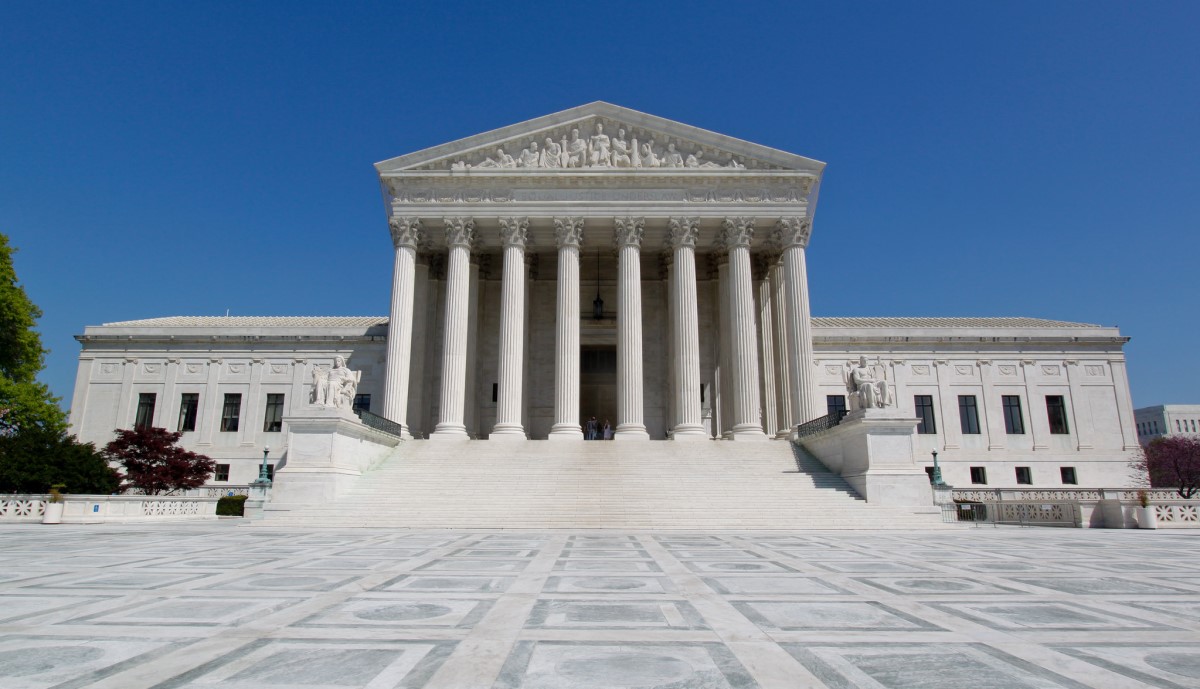Takeaways From The Supreme Court Protection Of Self-Defense
The Supreme Court has finally ended its two-decades long punt on Second Amendment jurisprudence, and it's glorious.

thefederalist.com
1. May-Issue Gun Licensing Regimes Violate the Second Amendment
In
New York State Rifle and Pistol Association, Inc. v. Bruen, two New Yorkers, Brandon Koch and Robert Nash, along with the New York State Rifle and Pistol Association, Inc., sued the superintendent of New York State Police. They challenged the state’s statute that requires a person wishing to carry a firearm outside his home or business for self-defense to obtain a license to carry a concealed weapon. Under the statute, to obtain such a license, the applicant must prove “proper cause exists” for the government to issue the license.
As the Supreme Court summarized, New York’s statute does not define “proper cause,” but state courts have held “that an applicant shows proper cause only if he can ‘demonstrate a special need for self-protection distinguishable from that of the general community.’” Merely “living or working in an area ‘noted for criminal activity’ does not suffice.” Rather, New York courts generally require evidence “of particular threats, attacks or other extraordinary danger to personal safety.”
This licensing scheme, as the Supreme Court explained, is called a “may issue” licensing law, because it provides government officials “discretion to deny concealed-carry licenses even when the applicant satisfies the statutory criteria, usually because the applicant has not demonstrated cause or suitability for the relevant license.”
Six jurisdictions have adopted “may issue” schemes in addition to New York: California, the District of Columbia, Hawaii, Maryland, Massachusetts, and New Jersey. In contrast, as the Supreme Court explained, “the vast majority of States—43 by our count—are ‘shall issue’ jurisdictions, where authorities must issue concealed-carry licenses whenever applicants satisfy certain threshold requirements, without granting licensing officials discretion to deny licenses based on a perceived lack of need or suitability.”
In yesterday’s decision, the Supreme Court held that New York’s proper-cause requirement violates the Second Amendment, applicable to the state by virtue of the Fourteenth Amendment and the incorporation doctrine. (For more on the incorporation doctrine, read
here.)
That law, the Supreme Court reasoned, unconstitutionally “prevents law-abiding citizens with ordinary self-defense needs from exercising their right to keep and bear arms because New York failed to prove that the Second Amendment’s text, as informed by history,” demonstrates the government may limit the right to carry arms in public to individuals who have “a special need for self-protection distinguishable from that of the general community.”
While the court’s Thursday decision technically concerned only the New York statute challenged in the lawsuit, the opinion’s analysis applies equally to the “may issue” licensing schemes in force in five other jurisdictions, meaning those will soon fall too.
2. The Supreme Court Is Done Punting on the Second Amendment
Thursday’s decision in
Bruen proves significant beyond the bottom line, however, first because the Supreme Court has finally ended its two-decades-long punt on Second Amendment jurisprudence.
In 2008, the Supreme Court held in
District of Columbia v. Heller that the Second Amendment, which provides, “a well regulated Militia, being necessary to the security of a free State, the right of the people to keep and bear Arms, shall not be infringed,” protects “the individual right to possess and carry weapons in case of confrontation.” The
Heller court further held that an individual’s right exists irrespective of service in a militia, reasoning that the “militia” clause, while explaining a purpose of the protection, did not limit the individual right.
Two years later, the high court in
McDonald v. City of Chicago held the Second Amendment “is fully applicable to the States” and state subdivisions such as counties and cities. Accordingly, state and state subdivisions, like the federal government, remain constrained by the national Constitution from infringing on an individual’s right to keep and bear arms.
While
Heller and
McDonald were landmark Supreme Court decisions and the first Second Amendment cases decided by the high court since 1939, both cases addressed issues that were narrow and limited to whether laws banning or regulating firearms in a person’s home violated the Second Amendment. In both cases, the Supreme Court declared the laws unconstitutional.
But
since then, “the Supreme Court has rejected numerous challenges to other laws affecting the right to bear keep and bear arms, taking a nearly universal hands-off approach on the Second Amendment. The rare exception came in 2016, when the court, without a hearing and in an unsigned two-page order, held in
Caetano v. Massachusetts that stun guns were protected under the Second Amendment. Unsurprisingly, that decision added little clarity to Second Amendment jurisprudence.”
That hands-off approach continued even while lower federal courts ignored the Supreme Court’s analysis in
Heller, which made clear that the Second Amendment protects “firearms commonly used for a lawful purpose.” Thus, for instance, the Supreme Court in 2017 let
standthe Fourth Circuit’s holding in
Kolbe v. Hogan that semi-automatic rifles are not constitutionally protected “arms,” even though “the prevalence of lawfully used AR-15s and semiautomatic AK-47s clearly meets the
Heller standard for garnering Second Amendment protection.”
With the Supreme Court’s silence in the Second Amendment arena came the creation of conflicting standards by the various circuit courts and many unanswered questions. On Thursday, however, the high court spoke, and in a majority opinion joined in full by six justices. That opinion clarified several significant aspects of the scope and protections guaranteed by the Second Amendment.






